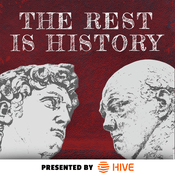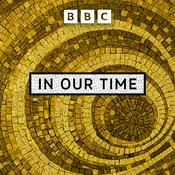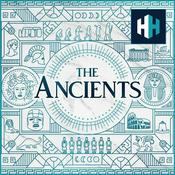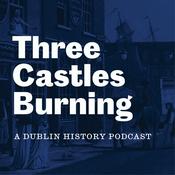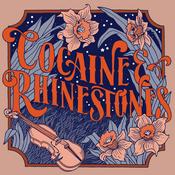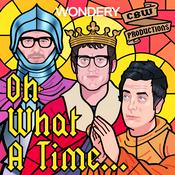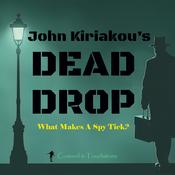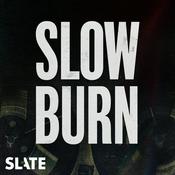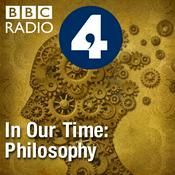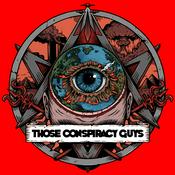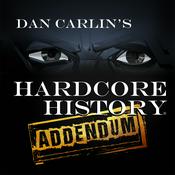539 episodes

#476 Hot Victorian Holiday: Bowery Boys History Live! at City Winery
23/12/2025 | 1h 15 mins.
Bowery Boys History Live is a live-show series at City Winery hosted by Greg Young featuring a variety of historians and tour guides. The last installment this summer featured author Liz Block and tour guide Keith Taillon. As live performances, they're a bit more loose and irreverent than the regular podcast and sometimes feature references to images being projected on stage.As a special holiday bonus, step into the season with this festive dose of “Hot Victorian” history, naughty-list edition.Join Greg Young of the Bowery Boys Podcast as he hosts this special holiday edition of Bowery Boys History Live!, recorded before a live audience at New York’s City Winery on Dec 12, 2025.Featuring an all-star lineup: Carl Raymond of The Gilded Gentleman Podcast, Aaron Radford-Wattley—creator and author of Hot Victorians: Meet Your Dream Man from the Past—and historian and tour guide Kyle Supley — aka the clock whisperer.So pour yourself some eggnog, cozy up by the fire, and enjoy live shenanigans full of holiday history and vintage comedy. Hosted by Simplecast, an AdsWizz company. See pcm.adswizz.com for information about our collection and use of personal data for advertising.

#475 Subway Tokens, MetroCards and Other Historic Fare
19/12/2025 | 1h 16 mins.
New Yorkers have gotten around their cities by subways, buses, elevated trains, streetcars and ferries. And the ways in which they have paid for them have changed as well. And keeps changing!This month, the city is saying farewell to the MetroCard, the magnetic-stripe card that has gotten the town moving since the early 1990s. When the orange cards debuted, they replaced the strange physical tokens commuters had been using since 1953.Mass transit fares were also a key issue in the past New York mayoral race — and they’ve always been a key issue for voters since the late 19th century. That’s part of the reason that fares famously remained five cents for decades. But as the subway system expanded, stretching through Brooklyn, Queens, and the Bronx, it soon became evident that it was becoming too expensive to operate.But changing the price is one thing; going from currency to token to MetroCard to OMNI (our latest method) requires technical modifications of every station in the system. In 1953, that entire system changed — literally overnight — to accommodate the first tokens.Jodi Shapiro of the New York Transit Museum joins the podcast to discuss the museum’s latest exhibition, FAREwell MetroCard, which celebrates the newly retired fare system.This episode was edited and produced by Kieran Gannon Hosted by Simplecast, an AdsWizz company. See pcm.adswizz.com for information about our collection and use of personal data for advertising.

The Great Fire That Transformed New York
12/12/2025 | 34 mins.
This month marks the 190th anniversary of one of the most devastating disasters in New York City history — The Great Fire of 1835.This massive fire, among the worst in American history in terms of its economic impact, devastated the city during one freezing December evening, destroying hundreds of shops and warehouses and changing the face of Manhattan forever.It also underscored the city’s need for a functioning water system and a permanent fire department.So why were there so many people drinking champagne in the street? And how did the son of Alexander Hamilton save the day?PLUS We give you a another reason to check out the Stone Street Historic DistrictTo mark this special anniversary, we have newly remastered and edited our classic Bowery Boys podcast on this subject which was originally released on March 13, 2009This episode was produced by Kieran Gannon Hosted by Simplecast, an AdsWizz company. See pcm.adswizz.com for information about our collection and use of personal data for advertising.

#474 Made in France: The Statue of Liberty’s Forgotten Origin Story
05/12/2025 | 1h 21 mins.
She stands in New York Harbor as America’s most recognizable symbol—but the story of the Statue of Liberty begins thousands of miles away, in the charming Alsatian city of Colmar, France.In this special on-location episode, Tom ventures to the picturesque town where sculptor Frédéric Auguste Bartholdi was born in 1834. Walking through Colmar’s cobblestone streets and half-timbered facades, Tom sits down with Juliette Chevée, curator of the Musée Bartholdi, to uncover the French side of this iconic American monument.Who was Bartholdi? What did the statue originally mean to the French republicans who conceived it at an 1865 dinner party? How did a rejected Egyptian lighthouse design become the template for Liberty’s form?And how did two Frenchmen—Bartholdi and the historian Édouard de Laboulaye—manage to convince a foreign country to accept a colossal structure without any government assistance from either France or the United States?This episode was produced and edited by Kieran Gannon Hosted by Simplecast, an AdsWizz company. See pcm.adswizz.com for information about our collection and use of personal data for advertising.

The Last Ships From Hamburg: An Immigration Story
28/11/2025 | 57 mins.
Our second in a series of podcasts about New York City and American immigration history. Between the late 1890s and early 1920s, over 2 million Jews from Eastern Europe fled their homes and made the long journey to America, escaping persecution and violence in their native countries. Many were fleeing state-sanctioned antisemitism in Russia.This mass immigration effort was, in large part, brought about by three entrepreneurial men: Albert Ballin, the director of the Hamburg-America line; Jacob Schiff, the German-born New York-based philanthropist and financier; and the Gilded Age financial titan J.P. Morgan.It is through the research and writing of historian Steven Ujifusa that many details of this story have finally been brought to light in his book The Last Ships from Hamburg: Business, Rivalry, and the Race to Save Russia's Jews on the Eve of World War I. In this special presentation of the Gilded Gentleman podcast, Steve joins Carl to discuss these momentous events. In addition, Steve shares his personal story about how he uncovered little-known material to bring this history to life. Check out last week's show on Ellis Island after you've listened to this one. Hosted by Simplecast, an AdsWizz company. See pcm.adswizz.com for information about our collection and use of personal data for advertising.
More History podcasts
Trending History podcasts
About The Bowery Boys: New York City History
Listen to The Bowery Boys: New York City History, The Rest Is History and many other podcasts from around the world with the radio.net app

Get the free radio.net app
- Stations and podcasts to bookmark
- Stream via Wi-Fi or Bluetooth
- Supports Carplay & Android Auto
- Many other app features
Get the free radio.net app
- Stations and podcasts to bookmark
- Stream via Wi-Fi or Bluetooth
- Supports Carplay & Android Auto
- Many other app features


The Bowery Boys: New York City History
download the app,
start listening.
